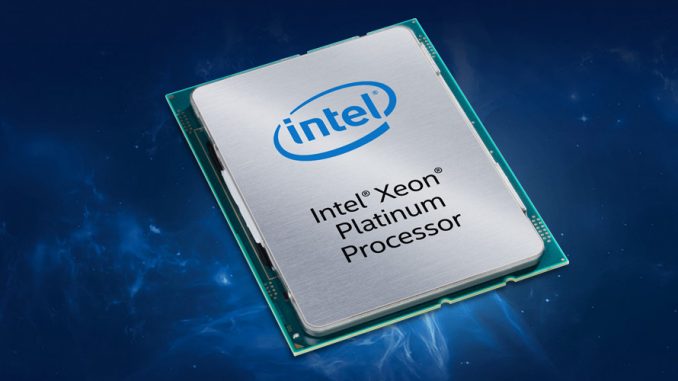
Intel has released new data on Cascade Lake-AP. Two 48 cores are 1.5 to 3.4 times faster than two AMD Epyc 7601 with 32 cores each.
AMD is competitive again, even with servers
The last decade has not always been as easy for Intel in the processor market as it was in the server market. The world’s largest processor manufacturer has dominated this market for a long time. For years, Intel has held over 90 percent of the market share in this area. The competition, on the other hand, could not really establish itself in this area. The main opponent AMD held only a few percent in the server sector. For years Intel had almost a monopoly, which is also reflected in many supercomputers, but above all in the cloud computing market.
However, with the introduction of Zen architecture and Epyc in March 2017, the situation began to change. The new AMD architecture became competitive again. In particular, the Multi Chip Module (MCM) approach brought several advantages to the Californian company. While Intel also produced Skylake-SP monolithically with a very expensive processor die, AMD had to produce and interconnect only four dies with up to eight cores each to get 32 processors. This significantly reduces scrap, and worse dies can be partially deactivated or used in other products with lower clock speeds. The Epyc CPUs can thus be produced much more cheaply, which is also reflected in the final price. With eight memory channels, AMD also had an advantage over the competition here. However, the circuitry also resulted in higher latency times, which Intel processors did not have.
While Intel initially mocked the Epyc processors as “glued together desktop processors”, AMD took a major step in this direction. The customers were not long in coming either. Microsoft, Oracle and, most recently, Amazon Web Services are now relying on Epyc processors in their cloud data centers. Intel’s monopoly is of course far from over, but the competition is definitely helful for the market. With Cascade Lake-AP, Intel has now launched a multi-die processor with up to 48 cores.
Cascade Lake-AP: Intel releases first benchmarks
The requirements in the server area are constantly increasing. Therefore, even with 28 or 32 cores, the end of the line is far from being reached. Last week, Intel took a first step towards even more cores with the Cascade Lake AP family. The new processors offer two dies with 24 cores each on an even larger package. The resulting processor can thus offer a total of 48 cores. The dies are based on Skylake-SP and are still manufactured with 14nm. Each one addresses six separate memory channels, which is why Cascade Lake-AP has a total of 12 memory channels. The two dies communicate via Intel’s UPI interface and behave like two processors interconnected on a motherboard. For the time being, it remains with a processor with 48 cores, but Intel is probably expanding the portfolio upwards with a 56 core in order to use its full potential.
To demonstrate the performance, the company published new benchmarks at the Supercomputing 2018 conference. These are extrapolated benchmarks from pre-series tests. Intel compares a system with two Cascade Lake AP processors with a total of 96 cores with a dual socket system from AMD, which is equipped with two Epyc 7601 and a total of 64 cores. The published benchmarks show an increase in performance from a factor of 1.5 to a factor of 3.4. The worst result in MILC, an application for quantum chromodynamics, is 50 percent ahead of the new Intel architecture. This is exactly the lead in cores that the Cascade Lake AP system has. The system does a little more in WRF, a calculation for weather forecasts, and OpenFOAM, the calculation of numerical fluid mechanics. Here, the Intel system achieves 60 percent more performance. In NAMD, Intel achieves 110 percent more power, in YASK even 210 percent more. In Linpack, the performance is even said to be 240 percent (factor 3.4) higher.
Comparison with Zen 2 still pending
Although the numbers are impressive, the main opponent of Cascade Lake-AP will not be the “old” Epyc generation. AMD introduced the second Epyc generation called Rome the day after the release of Cascade Lake-AP. Rome already comes with the new Zen 2 architecture. With it, AMD for the first time focuses on 7nm production in the processor area. Epyc 2 uses eight dies, each with eight processor cores, and a large management chip in the middle. A Rome processor can therefore accommodate up to 64 cores on one package. It remains to be seen how Cascade Lake-AP will perform against the new generation. However, it is likely that AMD 2019 will take the lead with improvements such as central storage and I/O management, more cores, higher clock speeds and improved efficiency.

Be the first to comment